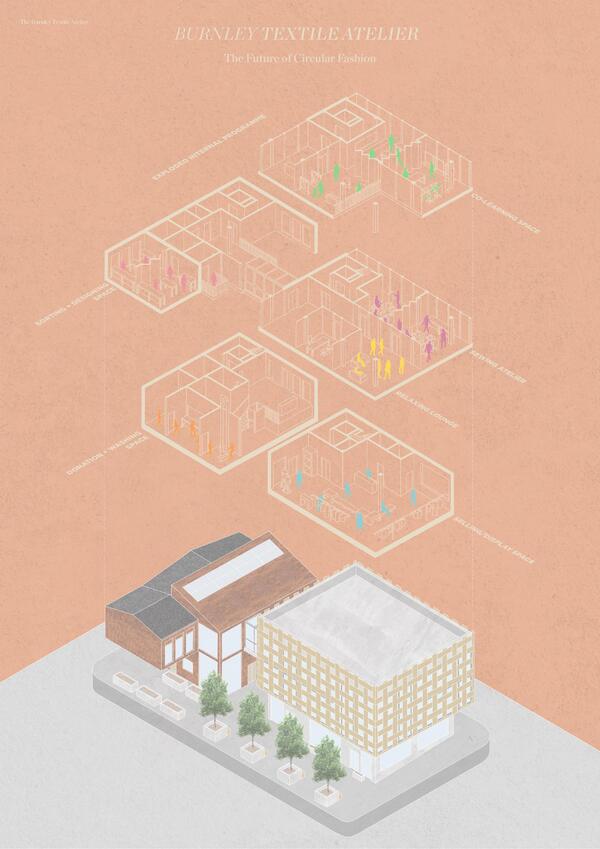Burnley Textile Atelier
BURNLEY TEXTILE ATELIER: The Future of a Circular Fashion Economy
The Burnley Textile Atelier aims to establish circular economy principles to tackle prevalent issues in Burnley such as the lack of diverse job opportunities for youth and the growth of the fast fashion industry. Situated in the once cotton capital of the world, my project aims to revive the beginning of Burnley and change the current trajectory and throwaway culture of fast fashion. The scheme weaves the community together, exploring ways to engage with and educate the public about the process of upcycling and its environmental benefits.
My proposal focuses on developing a design scheme that respects the surrounding environment and minimizes the amount of embodied carbon. This is addressed through the provision of a lightweight recycled steel structure and a circular deconstruction strategy. The façade materials also reflect this core focus, with the vernacular brick building employing reclaimed clay brick slips. Furthermore, the woven façade which embodies the motif of textiles utilises a triple-layer hybrid material with readily available plywood and recycled veneer, encased in a non-toxic fire retardant resin.
Considering the financial deprivation and lack of a creative job market for the youth, the Textile Atelier will offer textile donation, upcycling and selling areas to promote employment in the creative industry and create a circular fashion economy in Burnley. The programme consists of clothing donation points scattered around the city and inside the building, sorting and design studios, sewing rooms, selling spaces, co-learning spaces, and relaxation lounges. These interlinked programmes are divided into three main design fragments which connect via a glass walkway but are distinctly separated by different façade systems. The seamless internal connection allows users to experience the journey of the garment as it travels up from the donation space, completes its transformation in the sewing rooms and is then sold in the clothes shop below. The conveyor belt intervention condenses this journey, designed for visitors inside and outside to follow the lifecycle of the garments from start to finish. The scheme questions the typical cycle of clothing garments and our daily relationship with textiles, encouraging a more flexible and adaptable interaction.


